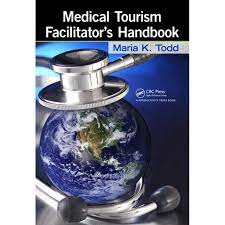
Unlocking Potential: The Power of Enrolling in Educational Classes
The Importance of Taking Classes
Classes play a crucial role in our personal and professional development. Whether you are pursuing academic studies, learning a new skill, or honing existing talents, enrolling in classes can have numerous benefits.
Continuous Learning and Growth
Classes provide opportunities for continuous learning and growth. By engaging with new ideas, concepts, and information, you expand your knowledge base and develop critical thinking skills. This ongoing process of learning helps you stay relevant in a rapidly changing world.
Skill Enhancement
Attending classes allows you to enhance your skills in various areas. Whether it’s mastering a new language, improving your coding abilities, or developing leadership qualities, structured classes provide the guidance and practice needed to excel in your chosen field.
Networking and Collaboration
Classes also offer networking opportunities by connecting you with like-minded individuals who share similar interests or goals. Collaborating with peers in a classroom setting can foster creativity, teamwork, and the exchange of valuable insights.
Personal Fulfillment
Furthermore, taking classes can contribute to personal fulfillment and satisfaction. The sense of accomplishment that comes from acquiring new knowledge or skills can boost self-confidence and motivation, leading to greater overall happiness.
Career Advancement
In the professional realm, attending classes can open doors to career advancement opportunities. Acquiring specialized certifications or qualifications through structured courses can make you more competitive in the job market and increase your earning potential.
Conclusion
In conclusion, classes are valuable tools for personal growth, skill development, networking, personal fulfillment, and career advancement. Whether you are exploring a new passion or seeking to enhance your expertise in a specific area, enrolling in classes can be a transformative experience that enriches both your personal and professional life.
Understanding Classes: Types, Usage, and School Systems Explained
- What are the 4 types of classes?
- Which is correct classes or class?
- What are the 5 classes in school?
- Is it courses or classes?
What are the 4 types of classes?
When it comes to classes, there are generally four main types that individuals can choose from based on their learning preferences and objectives. The first type is traditional face-to-face classes, where students attend in-person sessions with instructors. Online classes, the second type, offer flexibility and convenience by allowing students to access course materials and lectures remotely. Hybrid classes combine elements of both traditional and online formats, providing a blend of in-person interactions and virtual learning. Lastly, self-paced classes give students the freedom to progress through course materials at their own speed, offering autonomy and customization in the learning process. Each type of class has its unique benefits and considerations, catering to diverse learning styles and needs.
Which is correct classes or class?
The frequently asked question regarding whether to use “classes” or “class” depends on the context in which it is being used. “Classes” is the plural form of “class,” indicating multiple sessions or categories, while “class” refers to a singular session or category. Therefore, if you are referring to more than one session or category, it is appropriate to use “classes.” On the other hand, if you are discussing a single session or category, then using “class” would be correct. It is essential to consider the specific context in which the term is being used to determine whether “classes” or “class” is the appropriate choice.
What are the 5 classes in school?
In school, students typically take a variety of classes across different subjects to ensure a well-rounded education. The five core classes commonly found in most educational systems are English Language Arts, Mathematics, Science, Social Studies, and Physical Education. These classes provide students with essential knowledge and skills in language and communication, numerical reasoning, scientific inquiry, historical understanding, and physical fitness. By engaging with these diverse subject areas, students can develop a broad range of competencies that prepare them for academic success and future endeavors.
Is it courses or classes?
The distinction between “courses” and “classes” is often a common source of confusion for many individuals. In educational contexts, “courses” typically refer to the overall academic programs or curriculum offered by an institution, encompassing a series of related subjects or topics. On the other hand, “classes” usually pertain to specific sessions or meetings within a course where instruction and learning take place. Therefore, while “courses” represent the broader framework of study, “classes” denote the individual components or sessions that make up the course structure. Understanding this nuanced difference can help clarify terminology when discussing educational programs and learning experiences.


